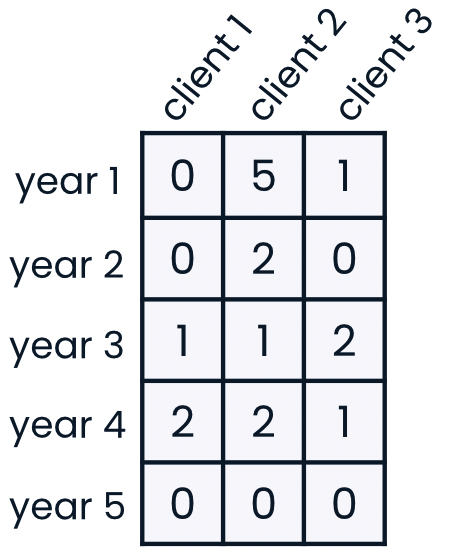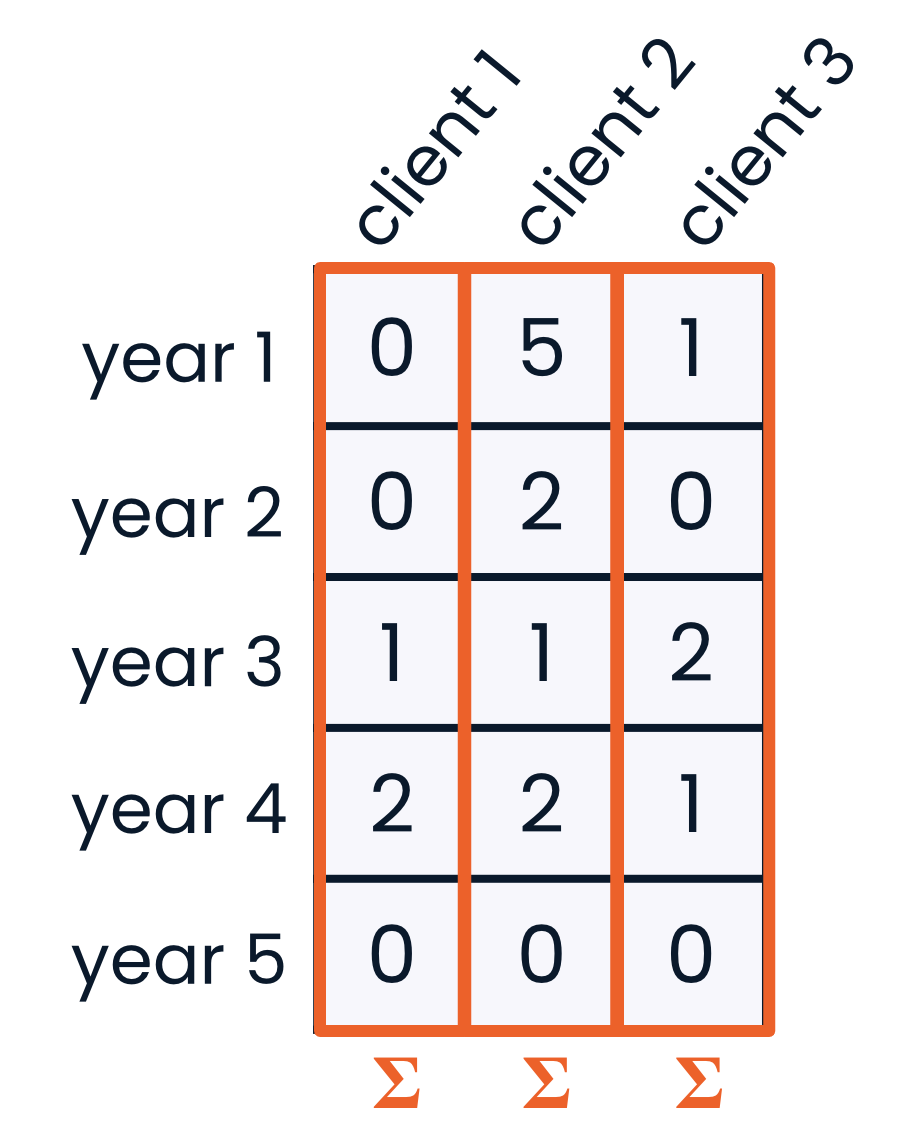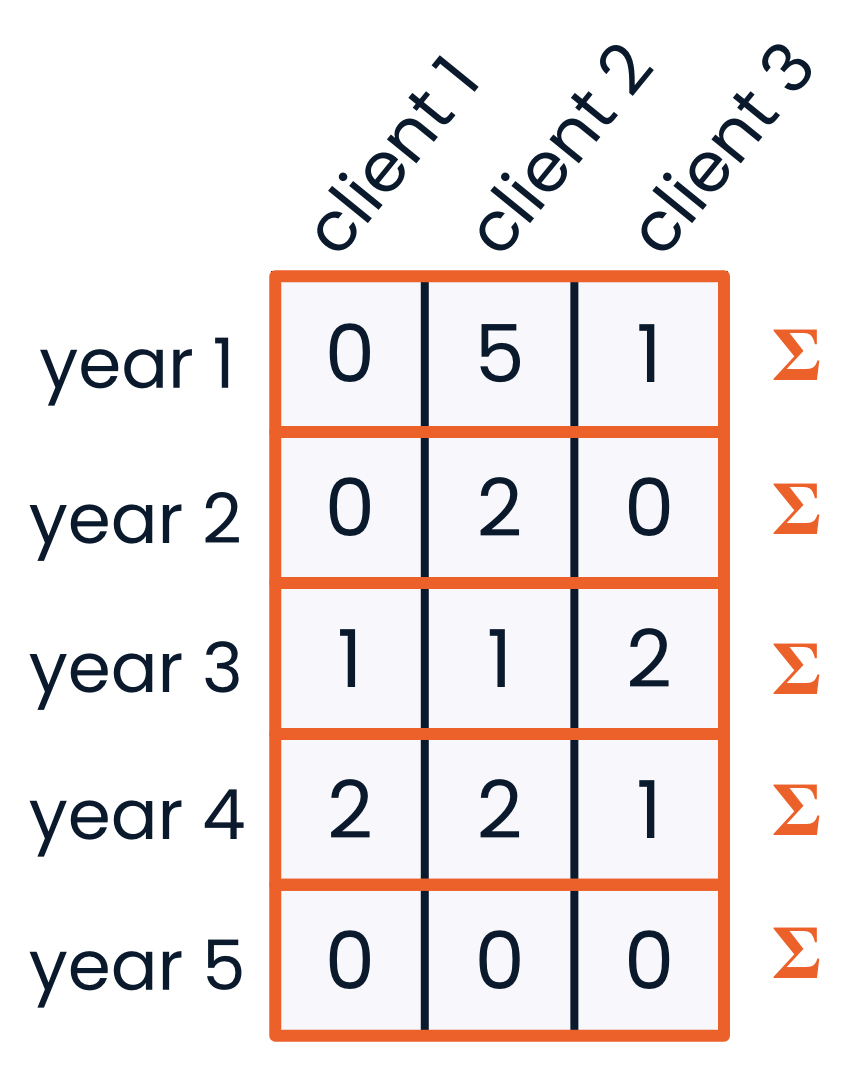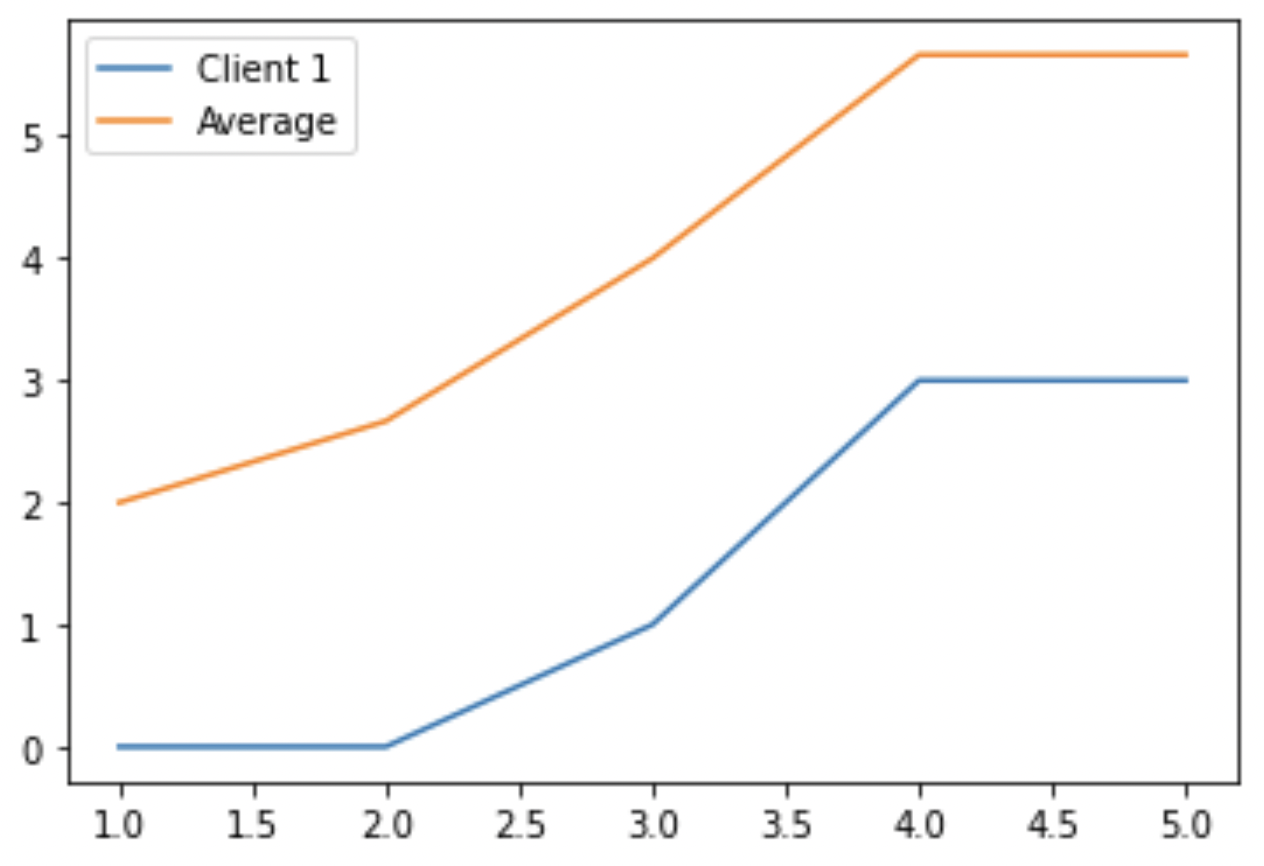Summarizing data
Introduction to NumPy

Izzy Weber
Core Curriculum Manager, DataCamp
Aggregating methods
.sum().min().max().mean().cumsum()
Our data
security_breaches
array([[0, 5, 1],
[0, 2, 0],
[1, 1, 2],
[2, 2, 1],
[0, 0, 0]])

Summing data

security_breaches.sum()
17
Aggregating rows

security_breaches.sum(axis=0)
array([ 3, 10, 4])
Aggregating columns

security_breaches.sum(axis=1)
array([6, 2, 4, 5, 0])
Making sense of the axis argument

Minimum and maximum values

security_breaches.min()
0
security_breaches.max()
5
security_breaches.min(axis=1)
array([0, 0, 1, 1, 0])
Finding the mean

security_breaches.mean()
1.1333333333333333
security_breaches.mean(axis=1)
array([2., 0.6667, 1.3333, 1.6667, 0.])
The keepdims argument
security_breaches.sum(axis=1)
array([6, 2, 4, 5, 0])
security_breaches.sum(axis=1, keepdims=True)
array([[6],
[2],
[4],
[5],
[0]])
Cumulative sums

security_breaches.cumsum(axis=0)
array([[ 0, 5, 1],
[ 0, 7, 1],
[ 1, 8, 3],
[ 3, 10, 4],
[ 3, 10, 4]])
Graphing summary values
cum_sums_by_client = security_breaches.cumsum(axis=0)
plt.plot(np.arange(1, 6), cum_sums_by_client[:, 0], label="Client 1")
plt.plot(np.arange(1, 6), cum_sums_by_client.mean(axis=1), label="Average")
plt.legend()
plt.show()

Let's practice!
Introduction to NumPy

